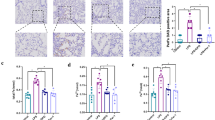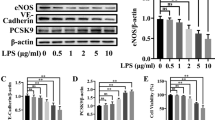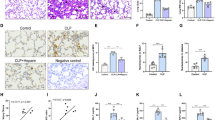Abstract
We recently reported that nitric oxide (NO) modulates expression of multiple genes associated with apoptotic pathways, including expression of caspase-8. The objective of the present study is to determine whether the NO-induced expression of the caspase-8 gene is regulated via signal transducers and activators of transcription-1 (STAT-1) signaling. The confluent monolayers of pulmonary artery endothelial cells (PAEC) were incubated with or without (control) 1 mM NOC-18, a NO donor, at 37°C for 0–24 h. In some experiments PAEC were pretreated with a Janus kinase (JAK-2) inhibitor, AG490 (20 μM). Exposure of PAEC to NO-increased relative levels of caspase-8 mRNA as determined using quantitative real time PCR. Relative levels of phosphorylated STAT-1 at Serine (Ser)-727, but not total STAT-1 expression in NO-exposed cells, were upregulated significantly compared to control cells. AG490 attenuated NO-induced phosphorylation of STAT-1 at Ser 727 and expression of caspase-8 mRNA, suggesting JAK2 plays a role in the induction of caspase-8 mRNA. The promoter of caspase-8 has four γ-activated sequence (GAS) and two interferon-stimulated response element (ISRE) transcription factor-binding sites. NO enhanced the STAT-1 binding activity to GAS/ISRE. Suppression of STAT-1 expression attenuated NO-induced elevation of caspase-8 mRNA. These studies demonstrate that a NO-dependent increase in caspase-8 mRNA levels is associated with phosphorylation of STAT-1 at Ser-727 and STAT1 binding to the caspase-8 promoter in cultured PAEC.



Similar content being viewed by others
References
Shen YH, Wang XL, Wilcken DE (1998) Nitric oxide induces and inhibits apoptosis through different pathways. FEBS Lett 433:125–131
Santore MT, McClintock DS, Lee VY et al (2002) Nitric oxide induces and inhibits apoptosis through different pathways. Am J Physiol Lung Cell Mol Physiol 282:727–734
Lee VY, McClintock DS, Santore MT et al (2002) Hypoxia sensitizes cells to nitric oxide-induced apoptosis. J Biol Chem 277:16067–16074
Muhl H, Sandau K, Brune B et al (1996) Nitric oxide donors induce apoptosis in glomerular mesangial cells, epithelial cells and endothelial cells. Eur J Pharmacol 317:137–149
Walford GA, Moussignac RL, Scribner AW et al (2004) Hypoxia potentiates nitric oxide-mediated apoptosis in endothelial cells via peroxynitrite-induced activation of mitochondria-dependent and -independent pathways. J Biol Chem 279:4425–32
Li L, Zhang J, Block ER et al (2004) Nitric oxide-modulated marker gene expression of signal transduction pathways in lung endothelial cells. Nitric Oxide 11:290–297
Du C, Guan Q, Diao H et al (2006) Nitric oxide induces apoptosis in renal tubular epithelial cells through activation of caspase-8. Am J Physiol Renal Physiol 290:F1044–F1054
Ruiz-Ruiz C, Ruiz de Almodovar C, Rodriguez A et al (2004) The up-regulation of human caspase-8 by interferon-gamma in breast tumor cells requires the induction and action of the transcription factor interferon regulatory factor-1. J BiolChem 279:19712–19720
Refaeli Y, Van Parijs L, Alexander SI et al (2002) Interferon gamma is required for activation-induced death of T lymphocytes. J Exp Med 196:999–1005
Durbin JE, Hackenmiller R, Simon MC et al (1996) Targeted disruption of the mouse Stat1 gene results in compromised innate immunity to viral disease. Cell 84:443–450
Kishimoto T, Taga T, Akira S (1994) Cytokine signal transduction. Cell 76:253–262
Igaz P, Toth S, Falus A (2001) Biological and clinical significance of the JAK-STAT pathway; lessons from knockout mice. Inflamm Res 50:435–441
Kovarik P, Mangold M, Ramsauer K et al (2001) Specificity of signaling by STAT1 depends on SH2 and C-terminal domains that regulate Ser727 phosphorylation differentially affecting specific target gene expression. EMBO J 20:91–100
Wen Z, Zhong Z, Darnell JE Jr (1995) Maximal activation of transcription by Stat1 and Stat3 requires both tyrosine and serine phosphorylation. Cell 82:241–250
Yang X, Merchant MS, Romero ME et al (2003) Induction of caspase 8 by interferon gamma renders some neuroblastoma (NB) cells sensitive to tumor necrosis factor-related apoptosis-inducing ligand (TRAIL) but reveals that a lack of membrane TR1/TR2 also contributes to TRAIL resistance in NB. Cancer Res 63:1122–1129
Maziere C, Dantin F, Dubois F et al (2000) Biphasic effect of UVA radiation on STAT1 activity and tyrosine phosphorylation in cultured human keratinocytes. Free Radic Biol Med 28:1430–1437
Stephanou A, Scarabelli TM, Brar BK et al (2001) Induction of apoptosis and Fas receptor/Fas ligand expression by ischemia/reperfusion in cardiac myocytes requires serine 727 of the STAT-1 transcription factor but not tyrosine 701. J Biol Chem 276:28340–28347
Zhang J, Li YD, Patel JM et al (1998) Thioredoxin overexpression prevents NO-induced reduction of NO synthase activity in lung endothelial cells. Am J Physiol Lung Cell Mol Physiol 275:L288–L293
Zhang J, Xia SL, Block ER et al (2002) NO upregulation of a cyclic nucleotide-gated channel contributes to calcium elevation in endothelial cells. Am J Physiol Cell Physiol 283:C1080–C1089
Bal-Price A, Brown GC (2000) Nitric-oxide-induced necrosis and apoptosis in PC12 cells mediated by mitochondria. J Neurochem 75:1455–1464
Aarskog NK, Vedeler CA (2000) Real-time quantitative polymerase chain reaction. A new method that detects both the peripheral myelin protein22 duplication in Charcot-Marie-Tooth type 1A disease and the peripheral myelin protein 22 deletion in hereditary neuropathy with liability to pressure palsies. Hum Genet 107:494–498
Kovarik P, Stoiber D, Eyers PA et al (1999) Stress-induced phosphorylation of STAT1 at Ser727 requires p38 mitogen-activated protein kinase whereas IFN-gamma uses a different signaling pathway. Proc Natl Acad Sci USA 96:13956–13961
Mandoro TH, Shafer BC, Vostal JG (1997) Peroxynitrite-induced tyrosine nitration and phosphorylation in human platelets. Free Radical Biol Med 22:1055–1063
Gow AJ, Duran D, Malcolm S et al (1996) Effects of peroxynitrite-induced protein modifications on tyrosine phosphorylation and degradation. FEBS Lett 385: 63–66
Kong SK, Yim MB, Stadtman ER et al (1996) Peroxynitrite disables the tyrosine phosphorylation regulatory mechanism: lymphocyte-specific tyrosine kinase fails to phosphorylate nitrated cdc2 (6–20) NH2 peptide. Proc Natl Acad Sci USA 93: 3377–3382
Brito C, Naviliat M, Tiscornia AC et al (1999) Peroxynitrite inhibits T lymphocyte activation and proliferation by promoting impairment of tyrosine phosphorylation and peroxynitrite-driven apoptotic death. J Immuno 162:3356–3366
Sareila O, Korhonen R, Karpanniemi O et al (2006) JAK inhibitors AG-490 and WHI-P154 decrease IFN-gamma-induced iNOS expression and NO production in macrophages. Mediators Inflamm 2:16161–16170
Alblas J, Honing H, deLavalette CR et al (2005) Signal regulatory protein alpha ligation induces macrophage nitric oxide production through JAK/STAT- and phosphatidylinositol 3-kinase/Rac1/NAPDH oxidase/H2O2-dependent pathways. Mol Cell Biol 25:7181–7192
Acknowledgments
The authors thank Ms. Gina. Eubanks and Mrs. Di-hua He for technician assistance and Mr. Bert Herrera for tissue culture assistance. This work was supported in part by the Medical Research Service of the Department of Veterans Affairs (JMP, ERB), by NIH grant HL-67886 (JMP), and by a Scientist Development Award from the American Heart Association of Florida (JZ).
Author information
Authors and Affiliations
Corresponding author
Rights and permissions
About this article
Cite this article
Li, L., Zhang, J., Jin, B. et al. Nitric oxide upregulation of caspase-8 mRNA expression in lung endothelial cells: role of JAK2/STAT-1 signaling. Mol Cell Biochem 305, 71–77 (2007). https://doi.org/10.1007/s11010-007-9529-z
Received:
Accepted:
Published:
Issue Date:
DOI: https://doi.org/10.1007/s11010-007-9529-z




